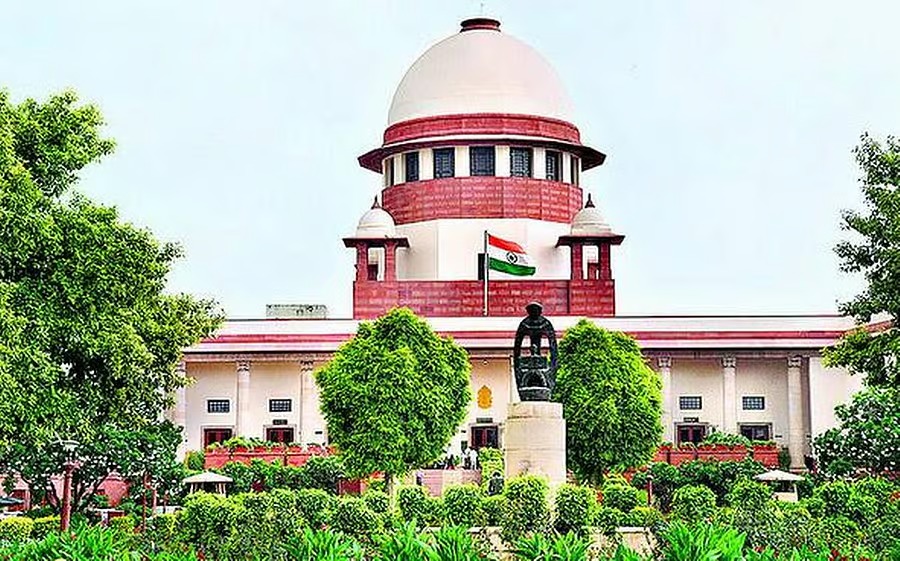@JUDGMENTTAG-ORDER
N.K. Jain, J.
This appeal under Order 43, Rule l(c) of the CPC is directed against the order dated 4-9-1997 passed by 1st Additional District Judge, Ratlam, in M.J.C. No. 55/96 dismissing plaintiff/appellant''s application under Order 9, Rule 9, Civil Procedure Code.
Plaintiff- the State Bank of India had filed a suit for recovery of debt of Rs. 1,70,820/- against respondents/defendants in the Court below. The defendants remained absent and were, therefore, proceeded against, ex parte. A few adjournments were sought by the plaintiff for evidence and ultimately the case was fixed for plaintiffs evidence on 3-8-1996. On that date when the case was called on for hearing, Shri Kailash Sharma, counsel for the plaintiff appeared and at the very threshold made an application seeking adjournment on the ground that the witness sought to be examined by the plaintiff has fallen ill, and he was, therefore, unable to give evidence. The learned trial Judge, however, rejected the prayer and vide his order dated 3-8-1996 dismissed plaintiffs suit for want of evidence. Plaintiff thereafter moved application under Order 9, Rule 9, Civil Procedure Code, seeking restoration of the suit and which was registered as M.J.C. No. 55/96. On notice, the defendants again remained absent and were, therefore, proceeded against, ex parte. However, the Court below vide order impugned dismissed the application holding that the order of dismissal of the suit being the one under Rule 3 of Order 17 no application for restoration under Order 9, Rule 9, CPC lies.
I have heard Shri D. S. Kale, learned counsel for the appellant. None has appeared for respondents though served duly.
The moot question requiring determination is whether the order dated 3-8-1996 dismissing the suit of the plaintiff was passed under Rule 3 or under Rule 2 of Order 17, Civil Procedure Code. Rule 2 of Order 17, Civil Procedure Code, provides for the procedure where parties fail to appear on any day to which the hearing of the suit is adjourned. Rule 3 deals with a situation where any party fails to produce his evidence, or to perform any other act necessary to the further progress of the suit for which time has been allowed by the Court. Rule 3 reads as follows :
"3. Court may proceed notwithstanding either parly fails to produce evidence etc. - Where any party to a suit to whom time has been granted fails to produce his evidence, or to cause the attendance of his witnesses, or to perform any other act necessary to the further progress of the suit, for which time has been allowed, (the Court may, notwithstanding such default, -
(a) if the, parties are present, proceed to decide the suit forthwith; or
(b) if the parties are, or any of them is, absent, proceed under Rule 2)".
4-A. By the amendment of 1976, Clauses (a) and (b) have been substituted for the words "Proceed to decide the suit forthwith" to define clearly the scope of Rule 3, so as to state the action to be taken by the Court when (i) the parties are present and (ii) they are absent.
In a case where parties or any of them are absent, the court is required to proceed under Rule 2. It is only when parties are present that the Court can proceed to decide the suit forthwith under Rule 3. For application of Rule 3, three conditions are necessary : (1) time must have been granted to a party to take all or any of the steps mentioned therein for the progress of the suit; (2) there must have been a default in taking such steps; and (3) the party concerned should have appeared in Court. A reading of Rule 2 and Rule 3 in juxtaposition would make the difference between Rule 2 and Rule 3 clear. Whereas under Rule 2, the Court can, in its discretion, in the absence of the parties or any of them, grant a further adjournment, or proceed to dispose of the suit in one of the modes prescribed in Order 9, but under Rule 3, notwithstanding the default of any party failing to do the specified acts for which time has been allowed, as the parties are present, the Court may, if it does not grant further adjournment, proceed to a decision on merits upon whatever materials are before it. Rule 3 would obviously apply only when the party concerned is present on the adjourned date and he fails to do the things for which adjournment was granted. Mere presence of counsel seeking adjournment would not amount to the presence of the party within the meaning of Clauses (a) and (b) of Rule 3. Rule 3 applies only where the hearing has commenced and an application for an adjournment is then made by one of the parties, but when before the hearing is commenced, plaintiff fails to appear on an adjourned date and the counsel merely appears to seek adjournment, the Court in case refuses the prayer for adjournment can proceed only under Rule 2 not under Rule 3.
Full Bench of this Court in Ramarao and Ors. v. Shantibai and Ors., 1977 MPLJ 364 = 7977 JLJ 147 dealing with the scope of Rule 2 and Rule 3 as they stood prior to the amendment of 1976 held;
"If, when a suit is called on for hearing, a party''s counsel appears and seeks adjournment but when the adjournment is refused he retires saying that he has no instructions, it will be no appearance of the party and Rule 2 of Order 17, CPC along would be attracted. However in such a case the defaulting party must show cause for non-appearance as well as for not fully instructing the counsel.
The same is the position if the counsel had sought adjournment because he was instructed by his client to ask for adjournment only, and not to proceed with the trial if adjournment be refused; or if the counsel feels a necessity to seek adjournment so that he may prepare himself, and on his own, seeks adjournment; or if the counsel appears merely to inform the Court that he has no instructions. In such circumstances Rule 2 of Order 17 applies and an application lies under Order 9, Rule 9."
The decision in Ramarao (supra) in fact interprets unamended provisions offer Rule 2 and Rule 3 as they now stand after amendment. In the instant case, as already pointed out, no hearing had commenced in the suit when the counsel appeared and merely made prayer for adjournment which was refused by the Court. Under the circumstance, the Court could not have proceeded under Rule 3 and the Order of dismissal passed by it would be deemed to be an order passed under Rule 2 and would be subject to the provisions of Order 9, Civil Procedure Code. The Court below therefore, erred in law in refusing to entertain application for restoration made under Order 9, Rule 9, Civil Procedure Code. It is a different matter that the application may not succeed on merits inasmuch as the Court would be free to hold that no sufficient cause for absence of the plaintiff on the date when his suit was called on for hearing, was made out.
In the result, I allow this appeal, set aside the order impugned and direct that the case (M.J.C. No. 55/96) will go back to the Court of 1st Additional District Judge, Ratlam for decision afresh on merits. The appellant/plaintiff is directed to appear before the Court below on 12-4-1999 for seeking further orders regarding hearing of the case.

